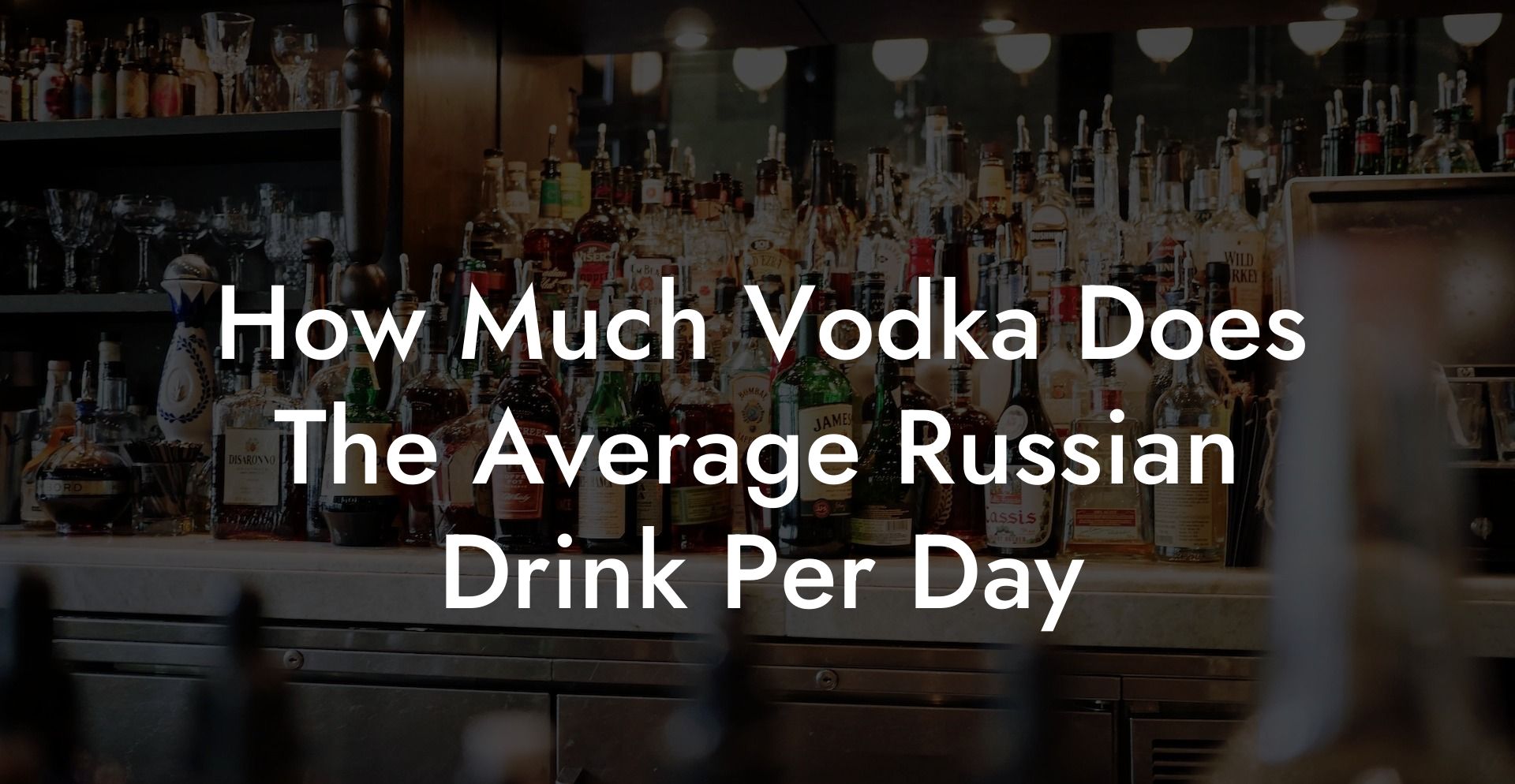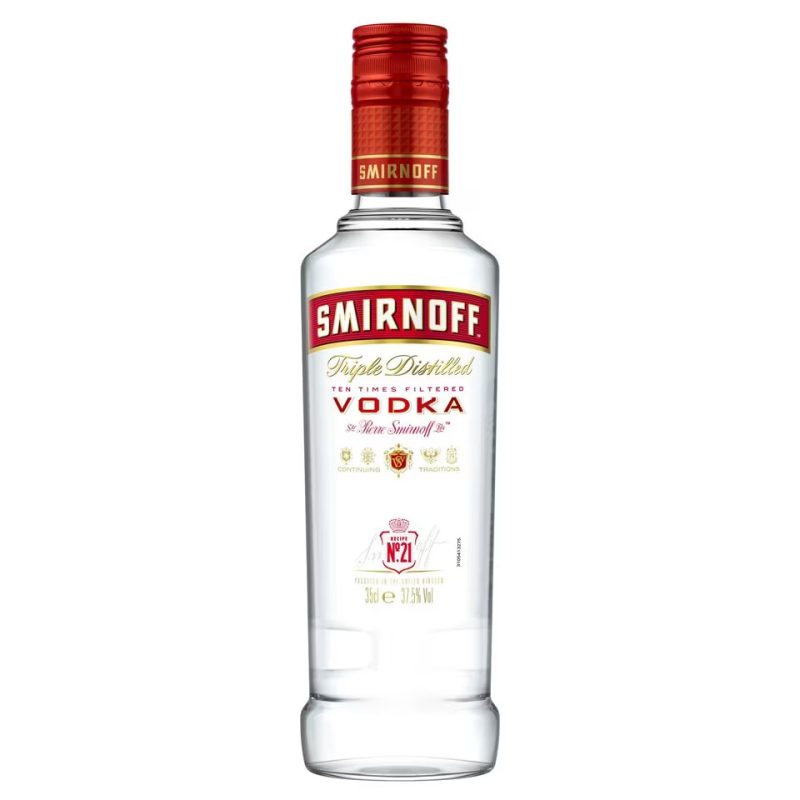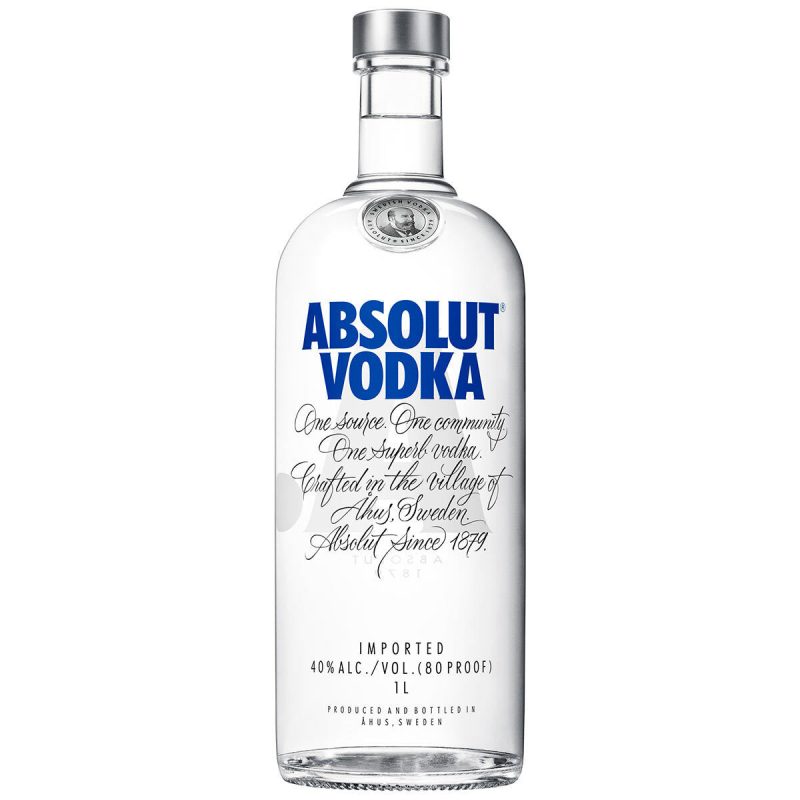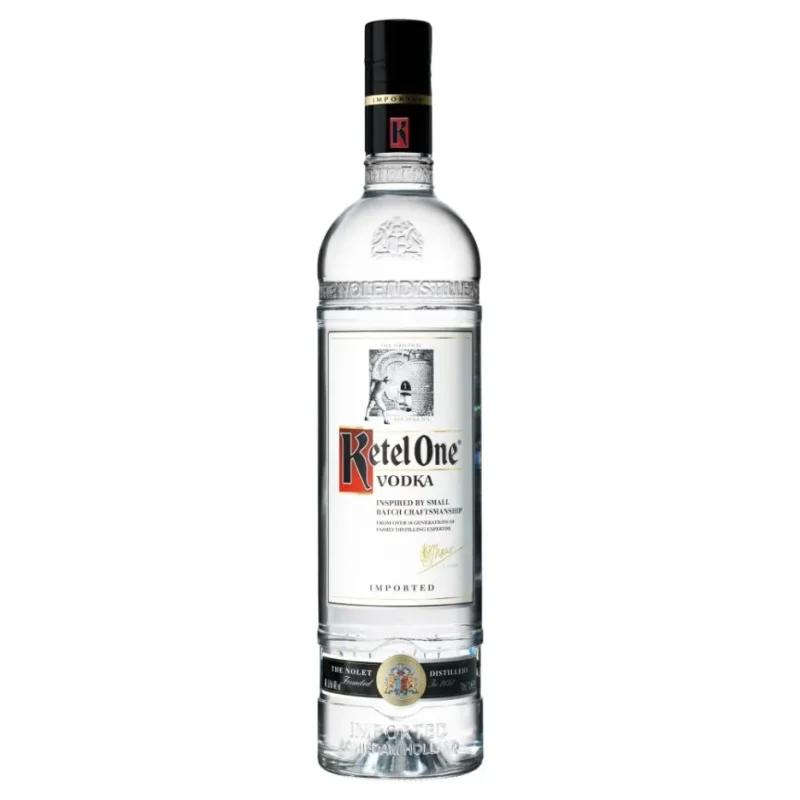In a land known for its freezing temperatures and unique culture, there's one thing that many people associate with Russia: vodka. This powerful spirit is synonymous with the country and has been intertwined with its history and traditions for centuries. But how much vodka does the average Russian really drink per day? In this article, we'll dive deep into the nation's relationship with vodka, take a look at the consumption levels throughout history, and see how cultural shifts have changed the way Russians drink their beloved spirit. Grab a glass and join us on this journey through the world of Russian vodka.
Best Budget Vodkas Ranked
How Much Vodka Does The Average Russian Drink Per Day Table of Contents
A Brief History of Russian Vodka
Modern-day Vodka Consumption Among Russians
Looking For The Best Vodka? You'll Love These Vodka Guides...
A Brief History of Russian Vodka
Vodka has been a staple in Russian culture since the late 9th century. It was first introduced to the country by traveling monks, who brought the concept of distilling grain with them from the Middle East. Throughout the centuries, vodka has been used for its medicinal qualities, as a currency, and of course, as a popular beverage for socializing and toasting.
The Rise of Vodka Consumption
Over time, the consumption of vodka in Russia began to increase, especially in the 17th and 18th centuries. This was due in part to a more advanced distillation process, which allowed for lower production costs and consequently, more affordable prices for consumers.
The government also played a significant role in the rise of vodka's popularity in Russia. In the 19th century, the state began taking control of vodka production and distribution, further boosting the drink's ubiquity. By the early 20th century, vodka accounted for around 90% of all alcohol consumed in the country.
Soviet Era and Declining Vodka Consumption
During the Soviet era, vodka became a symbol of Russia's national identity, and its consumption was seen as a patriotic duty. However, excessive alcohol consumption and its related social problems eventually became a concern for the government. In the 1980s, the Soviet Union introduced policies aimed at reducing vodka consumption, such as increasing the prices and limiting production.
The fall of the Soviet Union in the 1990s brought about a sharp decline in vodka consumption as a result of economic turmoil and the influx of other alcoholic beverages and foreign brands. Additionally, health awareness campaigns warning against the dangers of alcohol abuse also contributed to a change in drinking habits.
Modern-day Vodka Consumption Among Russians
Despite these efforts to reduce vodka consumption, it remains a revered beverage in the country. However, modern-day Russia has seen a shift toward more responsible and moderate drinking habits.
According to recent statistics, the average Russian drinks around 12.3 liters (3.25 gallons) of pure alcohol per year, with vodka making up approximately 70% of this figure. Calculating based on these numbers, it would mean that the average Russian drinks around 8.61 liters (2.28 gallons) of vodka per year, which equates to roughly 23.6 milliliters (0.8 ounces) per day.
Factors leading to a Decline in Vodka Consumption in Russia
- Increasing health awareness and concerns about alcohol-related issues.
- New generations of Russians opting for more diverse and imported drink options, such as wine and beer.
- Efforts by the government to reduce alcoholism and regulate the sale and consumption of vodka.
How Much Vodka Does The Average Russian Drink Per Day Example:
Imagine a typical modern Russian family gathering. Once upon a time, the table would be dominated by bottles of vodka, with everyone expected to participate in multiple toasts throughout the evening. These days, while vodka is still present, you're more likely to find beer, wine, and other beverages at the table. When toasts are made with vodka, the amount consumed at any one time is much lower than in the past.
So, while the average Russian does consume a significant amount of vodka – roughly 23.6 milliliters (0.8 ounces) per day – it's important to recognize that there's a growing trend in the country towards more moderate and diverse drinking habits. As a storied and important part of Russian culture and history, vodka will always have its place in the national psyche. But Russia's changing relationship with the spirit offers a fascinating look at the wider social and cultural changes taking place.
Frequently Asked Questions
What is the average consumption of vodka per day in Russia?
The consumption varies widely among individuals, but numerous studies suggest that the average Russian adult consumes significantly less vodka daily than stereotypes might imply. Government efforts to reduce alcohol abuse have had an impact on consumption levels.
Has vodka consumption in Russia declined in recent years?
Yes, vodka consumption in Russia has declined due to various factors including health campaigns, increased excise taxes, and restrictions on alcohol sales and advertising.
What are the current government regulations on vodka consumption in Russia?
The Russian government has implemented measures such as restricted sale times, minimum pricing, and a ban on advertising alcohol in an attempt to curb consumption and reduce alcohol-related harm.
Why is vodka so significant in Russian culture?
Vodka has deep roots in Russian history and culture as both a social lubricant and a traditional beverage at celebrations and gatherings, reflecting its importance in social rituals.
Is it true that every Russian drinks vodka?
No, this is a stereotype. Not all Russians drink vodka; individual preferences and attitudes towards alcohol vary widely across the population.
How does vodka consumption in Russia compare to other countries?
While Russia has been historically known for high levels of vodka consumption, other countries have comparable or higher alcohol consumption rates when considering total alcohol intake per capita.
What are the health implications of drinking vodka daily?
Regular vodka consumption, especially in large amounts, can increase the risks of numerous health issues including liver disease, cardiovascular problems, addiction, and various cancers.
What defines 'moderate drinking' in the context of vodka?
Moderate drinking typically refers to up to one standard drink per day for women and up to two for men, with a standard drink in Russia being 100ml of vodka, which is higher than in many other countries.
Are younger Russians continuing the trend of vodka consumption?
Younger generations in Russia are increasingly turning to beer and other alcoholic beverages, partly due to changing tastes and the influence of global trends.
How does the average daily consumption of vodka affect Russian society?
High rates of alcohol consumption, particularly vodka, can lead to social problems such as family breakdowns, workplace issues, and significant public health challenges.
How is vodka incorporated in Russian festivities?
Vodka is often featured during celebrations and holidays in Russia, accompanying meals and toasts as a symbol of hospitality and friendship.
What efforts are being made to reduce vodka consumption in Russia?
In addition to taxation and regulation, there are educational campaigns and initiatives to promote healthier lifestyles and reduce alcohol dependency among Russians.
Can tourists partake in vodka drinking when visiting Russia?
Yes, tourists can partake in vodka drinking, but it is advised to do so responsibly and with a clear understanding of one's limits to avoid alcohol-related harm.
What impact has the decline in vodka consumption had on the Russian alcohol industry?
The industry has adapted by diversifying their offerings, producing vodka with various flavors and strengths, and expanding their export markets.
Are there specific populations in Russia more prone to vodka consumption?
Historically, men and rural populations in Russia have had higher rates of vodka consumption, but these patterns are changing due to urbanization and health awareness.
What is the impact of vodka consumption on Russian life expectancy?
Excessive vodka consumption has been linked to reduced life expectancy in Russia, particularly among men, contributing to premature deaths from alcohol-related diseases.
How does Russian culture view sobriety and abstaining from alcohol?
While drinking is socially accepted, there is a growing sobriety movement in Russia, and abstaining from alcohol is becoming more respected as awareness of the consequences of excessive drinking increases.
What role does vodka play in Russian literature and film?
Vodka often appears in Russian literature and film, sometimes as a significant element showcasing character traits, cultural habits, or setting the tone of a scene or narrative.
How has Russia’s history influenced its consumption of vodka?
Russia's tumultuous history, including periods of poverty, war, and political upheaval, has influenced the role of vodka as a means of escape or respite from difficult circumstances.
What types of vodka are traditionally consumed in Russia?
Traditional Russian vodka is typically clear and unflavored, although there are now many varieties available, including flavored and premium brands.
Does the Russian government own the vodka industry?
The Russian government does not own the vodka industry, though it has significant influence over it through regulation and taxation, and there are state-owned enterprises in the alcohol sector.
Can excessive vodka consumption be considered a public health crisis in Russia?
Excessive alcohol consumption, including vodka, has been considered a public health issue in Russia, prompting government action and public health initiatives.
If you enjoyed this voyage into the world of Russian vodka, why not share this article with your friends or check out other guides and articles on Vodka Doctors? You'll find plenty to satisfy your thirst for knowledge about vodka brands, cocktails, and history.
















